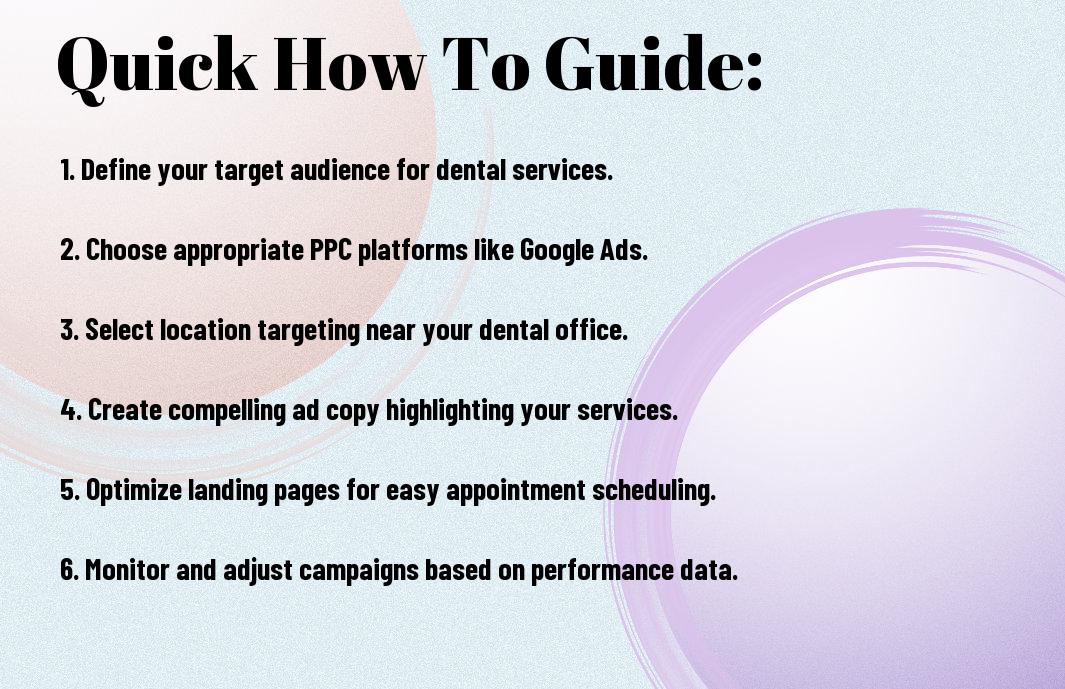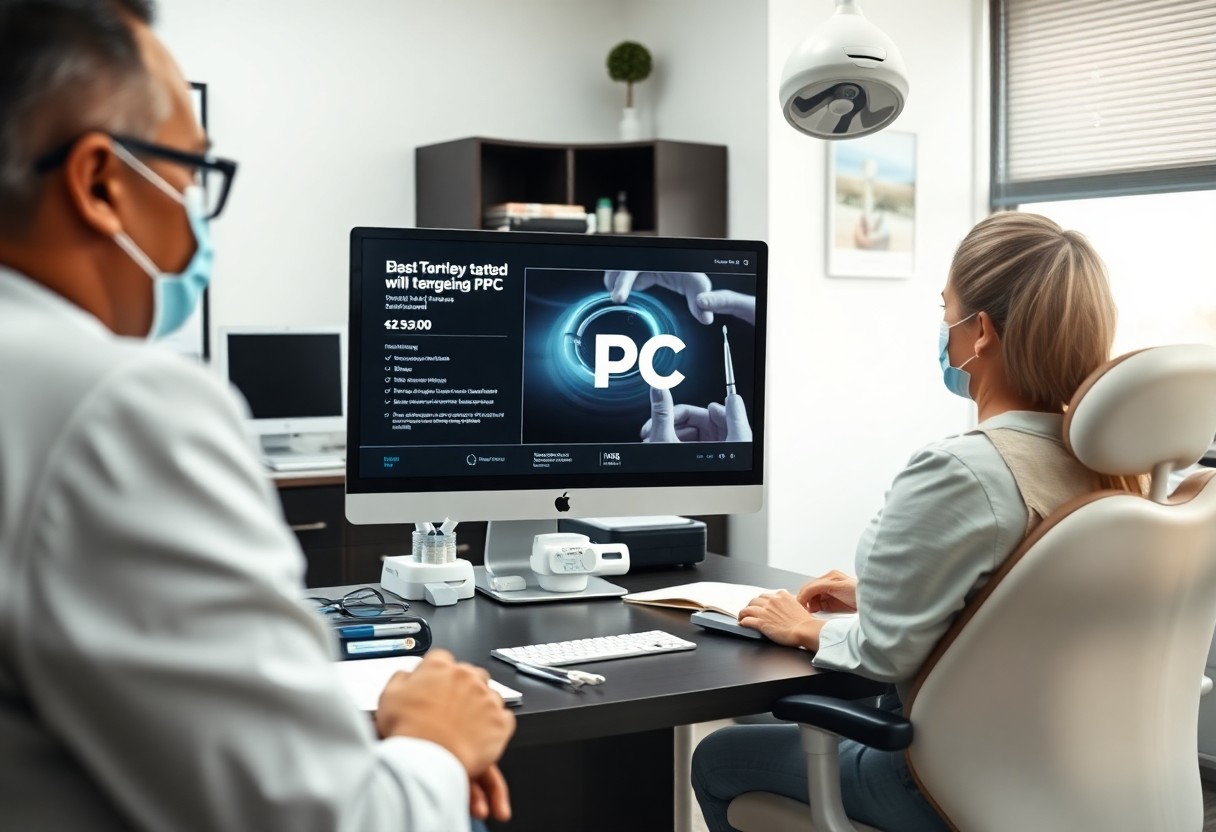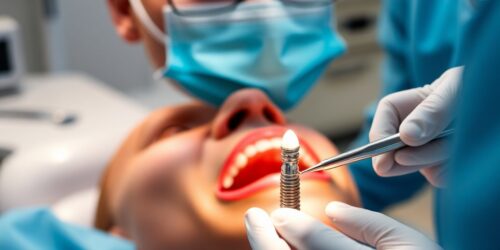How To Use Targeted PPC Advertising To Drive More Patients To Your Dental Office
Over the years, I have discovered that targeted PPC advertising can significantly boost the number of patients visiting your dental office. This strategy allows you to reach specific demographics in your area, ensuring that your ads are seen by those who are most likely to need your services. By effectively leveraging keywords, ad placements, and budgeting, you can maximize your return on investment and transform your practice’s visibility. In this post, I’ll guide you through the key steps to implement a successful PPC campaign tailored to your dental practice.
Key Takeaways:
- Define Your Audience: Identify the specific demographics, interests, and needs of potential patients in your local area to tailor your ads effectively.
- Select the Right Platforms: Choose PPC platforms such as Google Ads and social media channels that align with where your target audience is most active.
- Utilize Local Targeting: Implement geo-targeting strategies to ensure your ads reach individuals within a specific proximity to your dental office.
- Create Compelling Ad Copy: Write engaging and informative ads that highlight your dental services, special offers, and unique selling points to attract clicks.
- Optimize Landing Pages: Ensure your ads direct traffic to well-designed, user-friendly landing pages that provide relevant information and encourage conversions.
- Monitor and Adjust Campaigns: Regularly analyze the performance of your PPC ads and make data-driven adjustments to improve results and ROI.
- Leverage Extensions: Use ad extensions (like call buttons and location info) to enhance the visibility of your ads and provide additional information to potential patients.
Understanding Targeted PPC Advertising
As a dental practice owner, I recognize that attracting new patients is paramount to building a successful business. One effective method to achieve this is through targeted Pay-Per-Click (PPC) advertising. This form of online marketing allows me to display ads to potential patients who are actively searching for dental services in my area. By utilizing specific keywords and demographics, I can ensure that my ads are shown to the right audience at the right time, ultimately driving more qualified leads to my practice.
Key Principles of PPC
Understanding the key principles of PPC has transformed the way I approach patient acquisition. The primary principle is that I only pay for the ad when someone clicks on it, making this a cost-effective marketing strategy. Additionally, I can target specific groups based on location, interests, and behaviors, which allows me to reach the patients who are most likely to utilize my services. Building a well-structured campaign is vital, as it involves selecting the right keywords, creating compelling ad copy, and continually optimizing the campaign based on performance data.
Benefits for Dental Practices
With PPC advertising, I have discovered numerous benefits that can significantly impact my dental practice. The ability to effectively reach local patients is one of the most important advantages. By targeting specific geographic areas, I can ensure that my practice attracts patients who are looking for a dentist nearby. Furthermore, PPC ads can be tailored to highlight special promotions or services, making it easier for potential patients to see what I offer. It is also worth noting that I can achieve immediate visibility in search results, setting my practice apart from competitors who may rely solely on organic search engine results.
Understanding these benefits further reinforces my belief in using PPC as part of my marketing strategy. The immediacy of the results helps me to see what resonates with potential patients almost instantly, allowing me to adjust my messaging quickly if needed. Additionally, the ability to track performance metrics provides insights into which keywords and ads drive the most traffic and conversions, empowering me to invest my marketing budget more effectively. The whole process of PPC advertising, when executed well, can lead to a significant increase in patient footfall and enhance the overall success of my dental practice.

Setting Up Your PPC Campaign
There’s a systematic approach to setting up your pay-per-click (PPC) campaign effectively. First, I find it vital to determine your goals. Are you looking to increase appointments, promote a specific service, or attract new patients? Clearly understanding your objectives will guide how I structure my campaigns and allocate my budget. Once my goals are in place, the next step involves selecting the right platforms where my potential patients are most active. Each platform offers unique advantages and targeting options that can enhance the effectiveness of my ads.
Choosing the Right Platforms
Clearly, identifying the right platforms is imperative for the success of my PPC campaign. For a dental office, I often recommend focusing on Google Ads and social media platforms like Facebook. Google Ads allows me to tap into search queries that potential patients are actively using, while Facebook can help me target demographics and interests specific to my local community. Using both platforms in tandem maximizes my visibility and ensures I can capture leads at various stages of their decision-making process.
Keyword Research Tips
To make my PPC campaign effective, I pay close attention to proper keyword research. I start by brainstorming a list of keywords relevant to my dental services, such as general dentistry, cosmetic dentistry, and emergency dental care. Then, I dive deeper into tools like Google Keyword Planner to identify search volume and competition. I ensure to focus on long-tail keywords, which often reflect specific patient needs, as they typically have less competition and a higher conversion rate. Assume that investing time in thorough keyword research will yield significant rewards in attracting more patients to your office.
Right after establishing my primary keywords, I create a supplementary list of negative keywords as well. These are terms that I want to avoid for my ads, such as cheap or free dental services, which may attract the wrong audience. This refined approach helps ensure my advertising dollars are spent effectively and directed toward individuals genuinely interested in my services. Assume that determining both positive and negative keywords is a decisive step in enhancing my campaign’s performance and reaching the right patients.

Crafting Effective Ad Copy
Once again, the effectiveness of your targeted PPC advertising largely hinges on the ad copy you create. It’s imperative that your ads communicate a clear and compelling message that resonates with potential patients. I have found that focusing on the benefits of your dental services rather than just the features can greatly enhance engagement. Utilize simple, engaging language that speaks directly to the concerns and desires of your audience. Whether it’s promoting a special offer or informing them about a new treatment, clarity and relevance are key components that will draw them in and encourage them to take the next step.
Writing Compelling Headlines
Copy is the first impression potential patients have of your practice, and the headline is often the most visible part of your ad. I suggest using action-oriented language that instills a sense of urgency, as well as highlighting the specific benefits that your dental office provides. For instance, instead of a generic headline like “Affordable Dental Care,” try “Transform Your Smile Today with Our $99 New Patient Special!” This not only piques interest but also provides a clear incentive to click on your ad.
Call-to-Action Strategies
CalltoAction is crucial for guiding your audience towards taking the next steps. You need to be explicit about what you want them to do, whether that’s scheduling an appointment, signing up for a newsletter, or calling your office for a consultation. I often use strong phrases such as “Book Your Appointment Today!” or “Claim Your Free Consultation!” which can help emphasize urgency and encourage immediate action. Including a sense of exclusivity—like “Limited Time Offer!”—can also effectively motivate potential patients.
Effective call-to-actions don’t just tell your audience what to do; they also make it easy for them to take action. Incorporating buttons rather than just text links can increase click-through rates. I have seen that positioning the call-to-action prominently, using contrasting colors, and ensuring it stands out visually can lead to significant boosts in engagement. By crafting clear and persuasive call-to-action strategies, you make it easier for your potential patients to respond, thereby increasing the likelihood of driving them to your dental office.
Optimizing Targeting Options
Many dental practices overlook the power of targeted PPC advertising when trying to attract new patients. By refining your targeting options, you can reach the right audience and ensure that your advertising budget is spent effectively. For further insight, check out How New Dentists Use Standout PPC Ads To Win More …. It’s not just about getting clicks; it’s about getting clicks from potential patients who are actively searching for dental services. This makes optimizing your targeting options a fundamental part of your PPC strategy.
Demographic Targeting
Clearly, demographic targeting allows you to refine who sees your ads by specifying parameters such as age, gender, and income level. Understanding the demographics of your ideal patient can significantly enhance your PPC campaigns. For instance, if your dental practice specializes in pediatric dentistry, targeting parents within a certain age range in your ads will lead to more qualified leads. By doing so, you ensure your messages resonate with the right audience, ultimately increasing your chances of conversion.
Geolocation Strategies
Little details can make a big difference when implementing geolocation strategies. By targeting potential patients within a specific radius of your dental office, you can maximize the efficiency of your campaigns. This is especially pertinent for local services like dentistry, where convenience plays a large role in a patient’s decision-making process. You can set up your ads to appear only to individuals who are physically located near your practice, thus ensuring that you’re reaching people who are most likely to schedule an appointment.
This approach not only enhances your visibility among local prospects but also reduces waste on clicks from irrelevant audiences. Make sure to specify effective radius settings in your PPC campaigns, and consider utilizing zip codes or city names that align with your patient demographic. By targeting users who are literally within your neighborhood, you amplify the chance of foot traffic to your dental office. What’s more, geolocation strategies can be paired with time-of-day targeting, ensuring your ads are shown when potential patients are most active. This focused strategy enables you to cultivate stronger local ties, making your dental office the go-to option in your community.
Balancing Budget and Bids
Your approach to budgeting and bidding in PPC advertising is important for ensuring that your dental office can attract more patients without breaking the bank. With the right strategies in place, you can effectively allocate your resources to achieve the best results. A helpful resource is available at Achieve Targeted Practice Growth with Dental PPC …. By being strategic in your budgeting and bid management, you can leverage targeted PPC advertising to maximize your return on investment.
Budgeting Tips for Dental Offices
On my journey in managing PPC campaigns, I’ve learned several effective budgeting tips tailored for dental offices. First, it’s important to set a clear budget that’s aligned with your overall marketing goals. This includes assessing how much you’re willing to spend monthly or quarterly on PPC campaigns. Here are some tips to consider:
- Calculate your average patient lifetime value to determine how much you can invest per click.
- Monitor your competitors’ spending and adjust your budget to stay competitive.
- Start with a small budget to test campaigns and gradually scale up based on successful results.
Any budgeting approach will help maintain a healthy cash flow and ensure you don’t overspend on ineffective ads.
Bidding Strategies for Maximum ROI
Assuming you have your budget set, the next step is to explore effective bidding strategies that can drive maximum ROI for your dental practice. Implementing target CPA (Cost Per Acquisition) bids allows you to set a specific target cost for acquiring patients while monitoring performance closely. In addition to this, utilizing automated bidding strategies can help you optimize your bids based on real-time data and achieve the most conversions.
Offices that adopt a multi-faceted approach to bidding can optimize their campaigns strategically. This means using a combination of manual and automated bidding strategies to ensure that you’re always making the most out of your budget. It’s important to regularly evaluate bid performance—this allows you to adjust your bids based on peak times and patient demand, which can significantly influence ad placement and ultimately, patient acquisition. Without careful management and oversight, rising costs per click can easily eat into your ROI. However, when done correctly, these strategies can yield positive results for your practice.

Tracking and Analyzing Results
After implementing targeted PPC advertising, it’s vital to track and analyze the results to determine what’s working and what isn’t. This process allows me to refine my campaigns, optimize my budget, and ultimately drive more patients to my dental office. Using the right tools and metrics will help me gain insights into my advertising efforts, ensuring that I can make informed decisions moving forward. The more thorough I am in tracking these results, the better positioned I am to achieve my marketing goals.
Metrics to Monitor
On my journey to effectively run PPC campaigns, I focus on several key metrics that indicate the success of my ads. Some of the primary metrics I monitor include click-through rate (CTR), which shows how many users clicked on my ads compared to how many saw them; conversion rate, indicating the percentage of those clicks that resulted in booked appointments; and cost per acquisition (CPA), which reveals how much I am spending to acquire a new patient. By analyzing these metrics, I gain valuable insights that allow me to assess the return on investment (ROI) of each campaign I run.
Making Data-Driven Adjustments
Clearly, tracking my performance metrics isn’t enough; I need to make data-driven adjustments based on those insights. Whenever I identify trends or anomalies in my data, I take the opportunity to refine my PPC strategies. This might mean tweaking my ad copy, adjusting targeting settings, or even reallocating my budget towards the most effective keywords or demographics. Adapting my approach based on real results enables me to stay competitive and ensure that my marketing dollars are being spent wisely.
The goal of making data-driven adjustments is to continuously improve my campaigns. When I see a specific ad underperforming or a keyword not generating enough interest, I don’t hesitate to make changes. Conversely, if I discover high-performing ads, I may increase their budget to maximize their potential. By embracing a culture of experimentation and adaptation, I can ensure my targeted PPC advertising remains effective at driving more patients to my dental office.
Summing up
Summing up, leveraging targeted PPC advertising can significantly boost the visibility of your dental office and attract more patients. By taking the time to identify your specific audience, creating compelling ad copy, and selecting appropriate keywords, you can ensure that your ads reach those most likely to seek your services. It’s important to monitor and adjust your campaigns regularly to optimize performance and maximize your return on investment. When done correctly, PPC can serve as a powerful tool to grow your practice.
Moreover, utilizing platforms like Google Ads and social media advertising allows you to connect with your community in ways that were previously unreachable. By tailoring your ads to address local needs and concerns, you can position your dental office as the go-to choice for potential patients. In my experience, the combination of strategic targeting and the right message can lead to a noticeable increase in inquiries and bookings. The path to a thriving practice is more attainable when you harness the power of PPC effectively.
FAQ
Q: What is targeted PPC advertising?
A: Targeted PPC (Pay-Per-Click) advertising refers to a digital marketing strategy where businesses pay to display ads in search engine results or on social media platforms tailored to specific demographics. This allows dental offices to reach potential patients who are actively searching for dental services, ensuring higher visibility among their target audience.
Q: How can I determine the right keywords for my dental PPC campaign?
A: To choose the right keywords, start by researching dental services relevant to your practice such as “cosmetic dentistry,” “emergency dental care,” or “teeth whitening.” Use keyword research tools like Google Keyword Planner or SEMrush to find high-traffic keywords with lower competition. Additionally, consider geographic modifiers, such as including your city or neighborhood, to attract local patients.
Q: What platforms are best for running PPC ads for a dental office?
A: The most effective platforms for dental PPC ads include Google Ads and Facebook Ads. Google Ads allows your practice to appear in search results when potential patients are looking for dental services, while Facebook Ads enables targeted advertising based on user demographics and interests, ideal for promoting specific treatments, offers, or educational content.
Q: How do I set a budget for my dental PPC campaign?
A: Setting a budget involves determining how much you can afford to spend monthly. Start by calculating your average patient value and how many new patients you’d like to generate. Allocate a portion of your marketing budget to PPC and monitor the return on investment (ROI). It’s beneficial to start with a smaller budget, analyze the results, and adjust accordingly based on performance.
Q: How can I improve the conversion rate of my PPC ads?
A: To enhance your conversion rate, ensure your ads are relevant and include a strong call-to-action. Optimize your landing pages for clarity and fast loading times, making it easy for visitors to understand your services and schedule appointments. Also, consider utilizing special offers or incentives to encourage immediate action from potential patients.
Q: How do I track the success of my PPC advertising campaigns?
A: You can track your PPC campaign success using tools like Google Analytics, which provides data on website traffic, user behavior, and conversions. Set up conversion tracking to monitor actions like appointment bookings or contact form submissions. Regularly analyze these metrics to make data-driven adjustments to your campaigns for better results.
Q: What common mistakes should I avoid when using PPC for my dental office?
A: Common mistakes include not defining a clear target audience, neglecting to use negative keywords (which prevent your ads from showing up for irrelevant searches), and failing to test different ad formats or messages. Avoid setting and forgetting your campaigns; regularly review and adjust elements based on performance data to optimize results.





